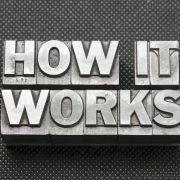Making Your Own Decisions with a Self-Directed IRA
Across the world, many people put their retirement decisions off. Or they might not ever make them. As it turns out, only a fraction of Americans are what you might call fully prepared for retirement. In fact, as much as 33% of Americans don’t even have any retirement savings at all, suggesting that retirement planning is underutilized in the United States. But with a Self-Directed IRA, it is possible for investors to take hold of their financial destiny and make decisions for themselves.
Understanding the Self-Directed IRA
For many people, the best way to get started with retirement is with a low-maintenance option, such as putting money aside in a retirement account through work. These investors might set up an automatic payment plan and not look at their retirement for many years. This is the traditional method of investing for many people because it happens through an employer. However, it is not the only method available to investors.
Using an employer-sponsored retirement plan gives investors an immediate advantage over those who are not saving anything towards retirement. But something that investors should consider is the amount of freedom and flexibility that can come through a Self-Directed IRA.
What does it mean, exactly? A Self-Directed IRA is a retirement account that investors manage themselves while working through a custodian, or a Self-Directed IRA administration firm. This arrangement puts the investor in charge of their investment decisions. And because of that, the investor can easily put money aside in nontraditional retirement classes allowed by the IRS, such as valid real estate and precious metal investments.
The Self-Directed IRA can be a benefit to investors who want to maximize their own returns by investing in what they know. And by extending retirement protections from an IRA, investors can maximize the value of their returns in the long-term.
Options for Investing in a Self-Directed IRA
Why Self-Direct an IRA? One of the most immediate reasons is that investors sometimes need an efficient method for putting money into nontraditional retirement assets. For example, an investor with experience investing in real estate may want to put real estate assets within an IRA. As long as they follow the rules, this can be a powerful way to put money aside for retirement.
Real estate is only one asset class, however. Investors with a Self-Directed IRA would also have access to investments such as precious metals, tax liens, private companies, private loans, and Single Member LLCs.
This wide range of asset classes means that investors not only get to choose their specific investments, but the specific makeup of their entire portfolio. It puts the investor in the driver’s seat. American IRA, for example, as a Self-Directed IRA administration firm, would only serve as the custodian of the account. We would not make any investment decisions on your behalf, nor would we make specific investment recommendations. With a Self-Directed IRA, the investor calls the shots.
Is It Time to Open a Self-Directed IRA?
The only one who can answer that question is you, the investor. But it is worth looking at the investment options available to you and get an idea of which account types might be right for you. By browsing these, you will also see the specific retirement advantages that come when you open a retirement investing account. Be sure to review specific rules such as contribution limits, how deductions work, and eligibility for specific accounts, as each of these rules is important to understanding the choices you face.
Interested in learning more about Self-Directed IRAs? Contact American IRA, LLC at 866-7500-IRA (472) for a free consultation. Download our free guides or visit us online at www.AmericanIRA.com.









